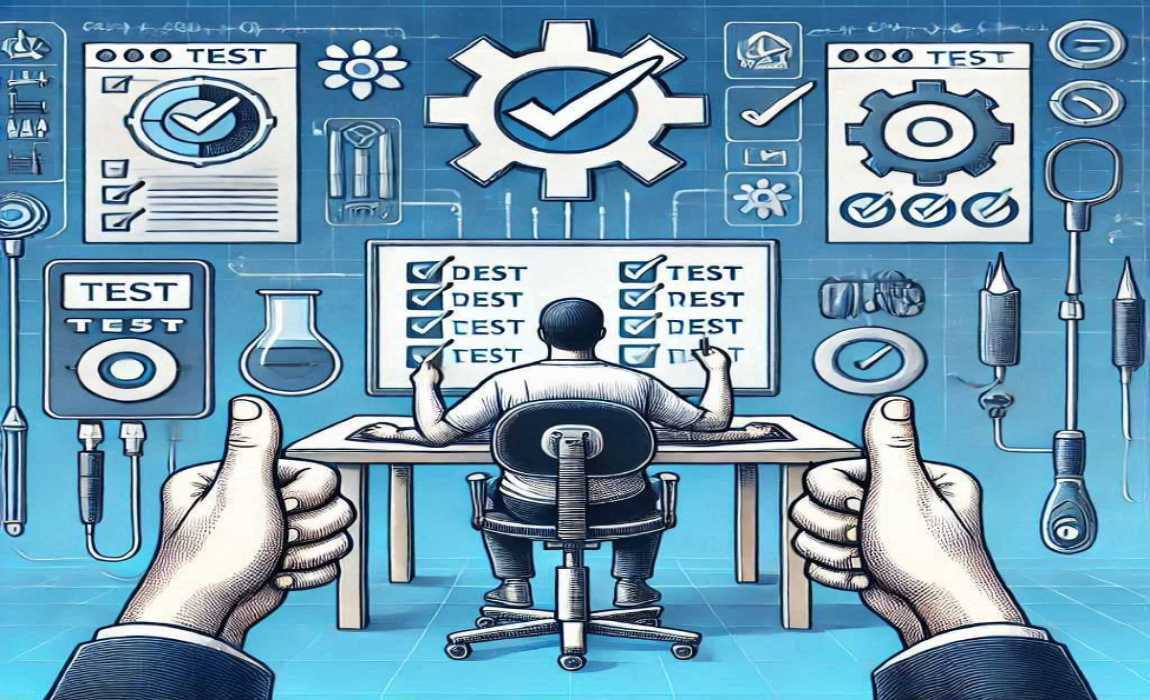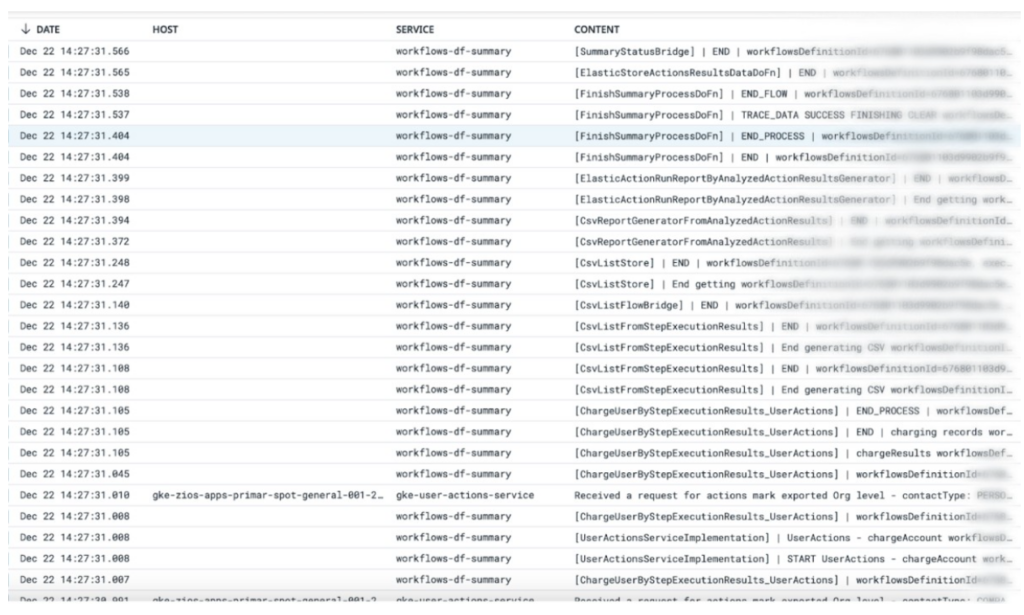Testing Workflows as a multi-service: Our Journey to Automated Testing at ZoomInfo
By ZoomInfo Engineering, Natan Lankri, Lena Kopito, January 21, 2025

Background
At ZoomInfo, we process and analyze massive volumes of data through various pipelines within our Workflows product. Google Cloud Platform’s Dataflow serves as a crucial infrastructure component in this process, enabling us to handle these complex data operations efficiently.
A few words about Workflows
Workflows is a sales and marketing automation product within the ZoomInfo platform. It allows users to automate various prospecting and lead management tasks. The key functionalities include:
- Automated trigger-based actions based on specific criteria or events (like when a company gets new funding, changes leadership, or shows buying signals)
- Lead routing and distribution among sales teams
- Automated enrichment of contact and company data
- Integration with CRM systems (like Salesforce) and other sales tools
- Automated email sequences and engagement tracking
- List building and management based on specified criteria
From a quality assurance perspective, Workflows testing encompasses three critical dimensions:
- Workflow creation – creating automated triggers based on events and different permutations to bring data.
- Workflow execution – running created automated trigger to collect actual data from Zoominfo data sources
- Workflow data integration – enrich external CRM systems with Zoominfo data collected from workflow execution.
The Testing Challenge
Multiple Processing Frameworks
Our data processing infrastructure spans across multiple technologies:
- GCP Dataflow Pipelines: Handle batch and streaming data processing
- Nest.js Microservices: Process data through REST and gRPC endpoints
- Kafka Message Queues: Manage asynchronous communication between services
Key Challenges
1. Lack of Standardization
The distributed nature of our system creates several standardization issues:
- Different input/output formats across processing frameworks
- Varied logging and monitoring approaches
- Missing crucial data in input/output logs
- Absence of comprehensive workflow execution summaries
2. Data Visibility Issues
Tracking data flow through our system presents significant challenges:
- No unified view of data movement across different systems
- Complex tracing of records across Kafka topics and services
- Limited visibility into transformation steps within Dataflow
- Difficulty correlating logs across multiple systems
3. Testing Complexity
End-to-end testing requires complex setup and dependencies:
- Challenging cross-system testing across hybrid architectures
- Extensive setup requirements for end-to-end testing:
- User provisioning with specific roles and permissions
- CRM system account creation and configuration
- Dependency on real data sources:
- Intent data
- Websights traffic
Manual Testing Limitations
These challenges forced our QA process to rely heavily on manual testing:
- QA testers needed to:
- Parse through Datadog logs for workflow execution analysis
- Manually generate trigger messages for streaming workflow testing
- Analyze results stored in designated buckets
- Verify data exports in third-party CRM systems
The Mock Data Dilemma
Mock data proved insufficient for our testing needs because:
- Workflows use complex filters and triggers
- Real data is essential for validating business logic
- Multiple data source dependencies
- Complex integration points with external systems
This combination of factors made our testing process:
- Extremely time-consuming
- Resistant to automation
- Prone to human error
- Difficult to scale
The lack of built-in solutions for programmatic access to logs and bucket files further complicated our ability to automate these processes effectively.
Finding a Better Way
Through extensive collaboration within our automation team, we developed a novel approach to testing. The key insight was that we needed to create a suite of internal APIs that would give us programmatic access to each step of workflow creation and execution while taking into account that workflows built as a multi-service which led us to struggle with data extraction, analysis and verification.
This realization led us to:
- Conduct a deep dive into our multi-service implementation
- Understanding service interactions
- Identify critical checkpoints throughout the workflow process
- Create monitoring points to track execution progress and results
The Implementation Journey
The development process was truly collaborative:
- Our QA automation team worked to define the required internal APIs
- We maintained continuous communication with the R&D team
- Requirements evolved through iterative feedback and refinement
Technical Implementation
Our API implementation followed a strategic approach to capture and validate each crucial step of the Dataflow pipeline. We used five core APIs that provide comprehensive visibility into workflow execution and data processing.
A key innovation in our implementation is a new polling mechanism that continuously invokes the API until reaching the expected result, ensuring reliable data validation throughout the suite execution.
Core API Components
1. Get GCP Status API
This API serves as our initial checkpoint for workflow creation:
- Returns real-time status updates from Google Cloud Platform
- Confirms successful workflow registration in the system
- Validates workflow configuration before execution
2. Execution Details API
Provides comprehensive workflow execution monitoring:
- Tracks the current state of workflow execution
- Reports completion status and execution time
- Identifies any execution bottlenecks or failures
- Enables real-time monitoring of workflow progress
3. Trigger Streaming Workflow API
Enables the initiation of streaming workflows through data injection via Pub/Sub messages. This API facilitates real-time data processing by allowing automated workflows to be triggered based on incoming message streams from the Pub/Sub system. The streaming capability ensures efficient handling of continuous data flows for workflow execution.
- Integration with Google Cloud Pub/Sub messaging system
- Support for real-time data processing triggers
- Automated workflow initiation based on message content
- Scalable message handling for high-volume data streams
4. Step Details API
Offers granular visibility into individual workflow steps:
- Returns detailed output data from each workflow stage
- Enables data validation at each transformation point
- Provides timing metrics for each step
5. Execution Record Details API
Implements detailed record-level tracking:
- Maps the complete journey of individual records through the workflow
- Shows all transformations applied to specific records
- Helps identify where and why records might fail
6. Execution Summary Report API
Generates comprehensive execution analytics:
- Aggregates key performance metrics
- Reports total records processed and failure rates
- Tracks credit consumption

Code Examples
Here are key examples of how to interact with our workflow testing APIs:
Wins
Breakthrough in End-to-End Testing
- Successfully implemented the first automated end-to-end tests covering our entire multi-service architecture
- Achieved comprehensive testing across different services, data formats, and processing frameworks
- Established reliable automated verification of complex workflow scenarios
Significant Performance Improvements
- Reduced manual regression testing time by more than 50%
- Decreased the effort required for testing complex workflows
- Minimized time spent on repetitive testing tasks
- Enabled QA teams to focus on more strategic testing activities
Enhanced Platform Stability
- Improved early detection of issues through automated testing
- Increased confidence in workflow deployments
- Reduced production incidents related to workflow execution
- Established more consistent and reliable testing processes
Measurable Impact
- 50%+ reduction in manual testing effort
- Increased test coverage across the platform
- Faster feedback cycles for development teams
- More reliable and consistent test results
Next Steps
Our immediate priorities for the next quarter are focused on expanding our testing capabilities and adapting to product evolution:
1. Increase Automation Coverage
- Expand test coverage to include edge cases and error scenarios
- Develop reusable test components for common workflow patterns
- Implement automated regression testing suite
- Build comprehensive end-to-end test scenarios for critical business flows
2. Support Complex Workflows Scenarios
- Develop testing frameworks for multi-stage workflow orchestration
- Create validation mechanisms for conditional branching logic
- Add support for testing data transformation accuracy in complex scenarios
3. Support the New Workflow Product Design
- Adapt testing infrastructure to accommodate new architecture changes
- Build a generic automation framework that enables other teams to easily test their custom workflow steps
- Create reusable testing components that reduce development time for new workflow testing
- Create testing tools for new workflow components
- Ensure backward compatibility with existing test suites
These priorities reflect our commitment to maintaining robust testing practices while supporting product evolution and increasing test coverage across our platform.



